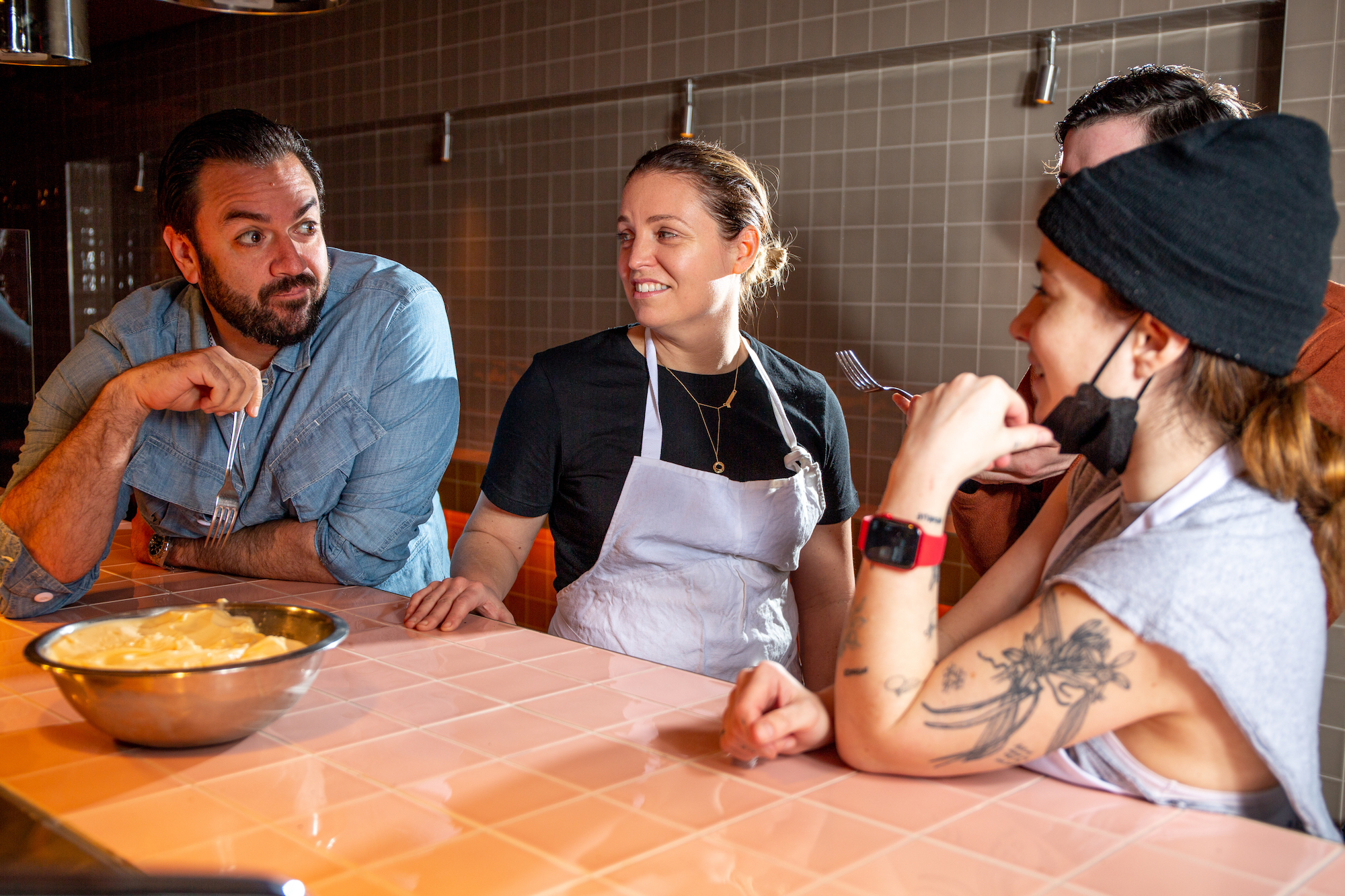
Melissa Rodriguez Is Ready to Reboot Fine Dining In New York. But First, Pizza.
Outside 85 Tenth Avenue in Manhattan’s Chelsea neighborhood, the black carpet stitched with bold block lettering is gone, ripped from the street. The backlit marquee hanging over the double doors is noticeably blank.
Once this was Del Posto, a restaurant that, in its heyday, was the epitome of Italian fine dining in America. It was the most star-studded Italian restaurant around, literally and figuratively. Celebrities — and critics — flocked there for the rarefied Italian cooking, and just as notably, for its grand, Gatsbyesque digs. Years before Carbone pulled back its velvet curtain, Del Posto made its name by serving very good, very expensive Italian food with a side of self-indulgent dining theatrics — purse stools, a Steinway & Sons grand piano.
Del Posto closed last April — primarily due to the pandemic, but also, in a way, a casualty of its own complicated legacy. Now there is new management: The chef Melissa Rodriguez and her business partners Jeff Katz and James Kent are transforming 85 Tenth Avenue into not one, but three new restaurants: Mel’s, an approachable but still ambitious spot for pizza and the like; as well as Al Coro and Discolo, a restaurant and bar combo that revive the space’s legacy of Italian fine dining and drinking — just a bit differently. The trio burned the sage, they sold off all the trapping, they wiped the slate clean. Now, Rodriguez, Katz, and Kent are ready for the big reveal.
Rodriguez is not new here (and neither is Katz). She has been cooking at 85 Tenth Avenue since 2011, just after The Times’ Sam Sifton gave Del Posto four stars; it was the paper’s first four-star Italian review since 1974. But that job was more the natural evolution of her experience as a chef than its start. Rodriquez graduated from the Culinary Institute of America in Hyde Park in 1999. Some of her first jobs — the ones that set a precedent — were in kitchens run by exacting European chefs like Cornelius Gallagher (at Oceana) and Daniel Boulud (at his eponymous restaurant, Daniel). Ultimately, Rodriguez settled on Italian cuisine at Del Posto, marrying her experience in haute cuisine with the gusto of regional Italian cooking.
- Is New York Ready For an Epic Restaurant Opening? Saga Is Betting It Is
- Does Being a Classic Restaurant Mean You Can Never Change?
- The Musket Room Won’t Go Back to the Status Quo
- Everything You Need to Know About Kappo Sono, Now Open on the Lower East Side
- New York City’s Nominees for the 2022 James Beard Awards
This isn’t even the first time Rodriguez will be the headlining talent at this address. In 2017, when executive chef Mark Ladner left Del Posto, Rodriguez was selected to take over. She slid into the role seamlessly, successfully — and maintained the restaurant’s Michelin star — until COVID shut down the restaurant three years later. Shortly after that, Del Posto closed for good. It was the end of an era, and not without controversy. The restaurant’s owners at the time, B&B Hospitality, were dealing with not only a pandemic but the lingering effects of Mario Batali’s downfall. Regardless of who had been in the kitchen, Del Posto was inextricably linked to Batali (and partner Joe Bastianich). The pandemic was just the final push.
But when Del Posto’s doors closed forever, an opportunity emerged. “Melissa and I have been wanting to do this for years,” Katz says. “Somehow, we manifested this project exactly as it was conceived.”
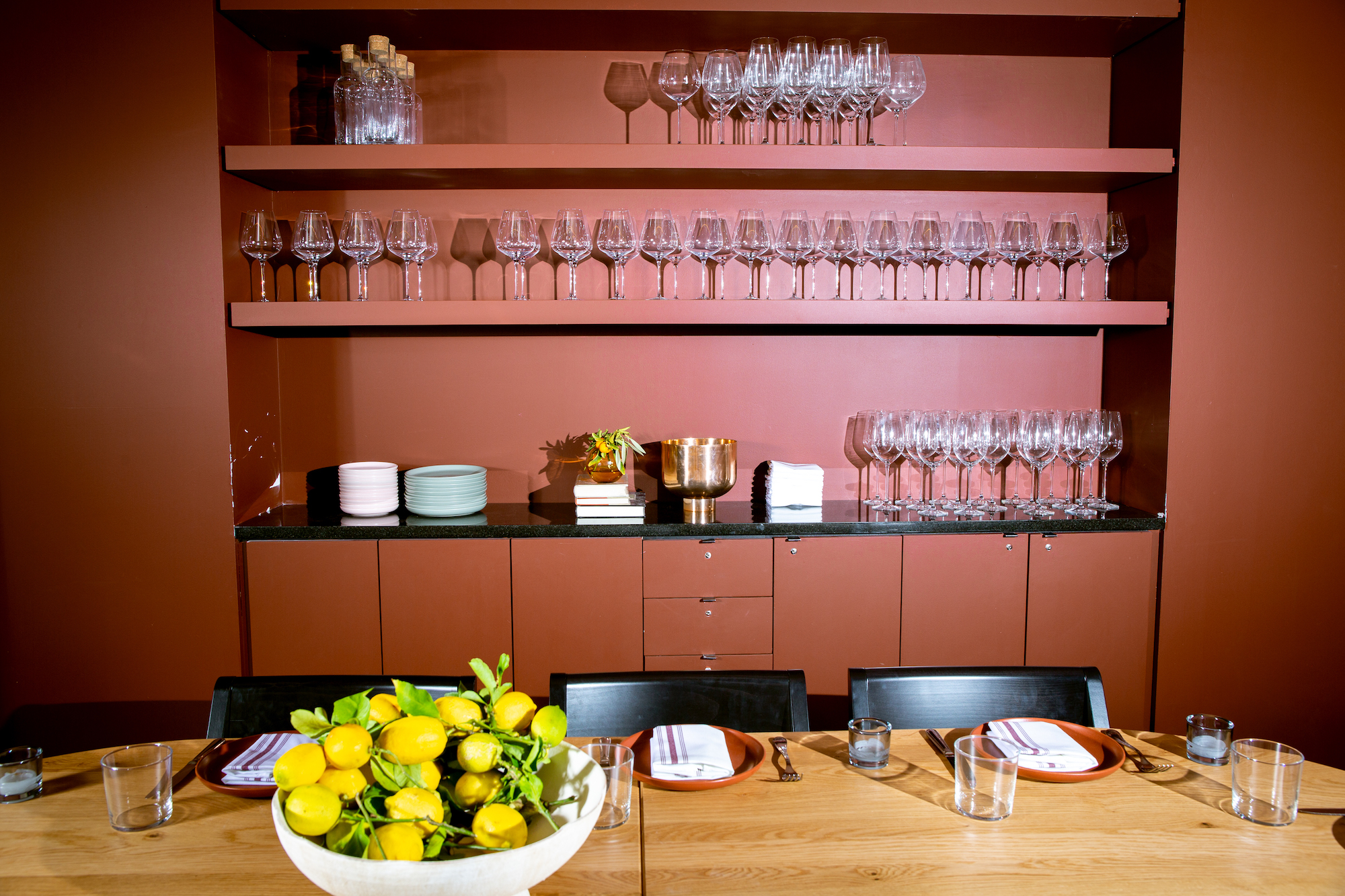
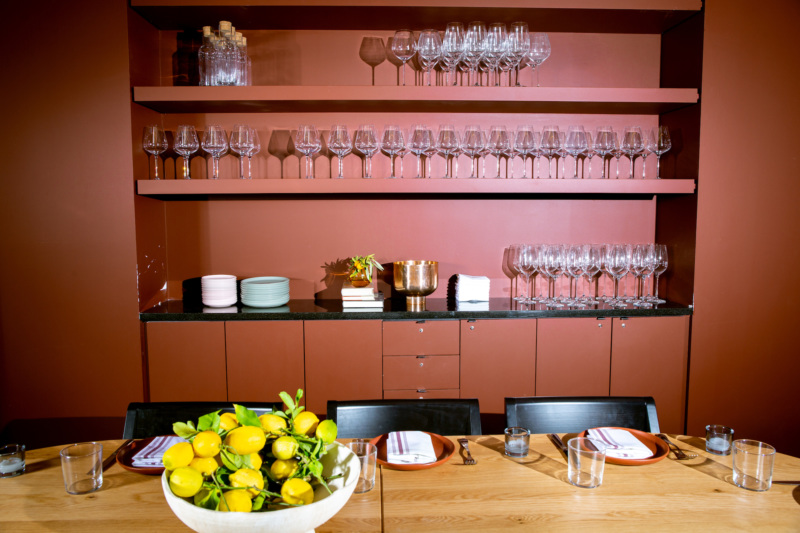
Katz was also at Del Posto, as its managing director, when it closed. He’d been there since 2006, and had recently formed a new restaurant group called Radicle Hospitality, which was known for the well-received and high-profile Crown Shy, and soon for the mega-projects SAGA and Overstory as well. Katz and his business partner at 70 Pine, the chef James Kent — himself a longtime fine dining veteran, having cooked for Eleven Madison Park’s Daniel Humm for 10 years — asked Rodriguez to join them in buying the space from B&B Hospitality. They offered her a partnership role, and the opportunity to put her own stamp on not just the food but the space. And Rodriguez is undertaking one of the most ambitious restaurant projects to open in New York in a long time — a rare opportunity for a woman in the industry. And equally significant, perhaps, this is a chance to reset the reputation that has shrouded this location in recent years.
Together, they have built out an equally epic, no-expense-spared set of dining rooms. Mel’s is rendered in sweet blush tones, the eye-inspiring work of interior design firm MN (the same team behind Crown Shy, SAGA, et al.). And while Al Coro aims to be the same kind of occasion-worthy dining room as Del Posto, it also hopes to be more of a relaxed experience, less an orchestration of formalities. “We want to create a backdrop for a high-energy, celebratory big night out,” says Katz.
It’ll be a tricky balance, managing three distinct venues, but Rodriguez is ready for the challenge. We spoke to her about getting back into the kitchen after a nearly two-year hiatus and how she views the future of fine dining.
Mel’s is taking reservations as of March 9. This interview has been lightly edited for length and clarity.
RESY: You’re opening Mel’s in what some might remember to be the original John Dory space, and Al Coro and Discolo in what was Del Posto next door. The first question on my mind is the space. How are you transforming the dining room of Del Posto, which was so grand, into this multi-concept project?
Melissa Rodriguez: Well, Mel’s is very separate. What was next door, that space hasn’t changed. The footprint that was formerly Del Posto is now Al Coro, but it looks completely different. We gutted the entire front of the house, with the exception of the mezzanine. Lots of things have moved around. We repurposed the space downstairs and that is now Discolo.
There was an auction too, right, where whole parts of the restaurant were sold off.
Yeah. It was a big project. We’re still in it. There have been many roadblocks, most of them have to do with the fact that it’s a 24,000-square-foot space. With COVID, timing and availability, stuff like that definitely got in the way. But the footprint of what was formerly Del Posto hasn’t really changed.
How did you land on running three venues when managing one is hard enough?
Jeff and I always talk about where we want to eat on our days off — and where we don’t want to eat on our days off. We always thought it would be fun to have a restaurant that would be more accessible than what is offered next door. There are some people that dine that way [at what was Del Posto] frequently, but, for myself, not really. If it’s a special occasion or celebration, sure. So having the opposite of that felt like a really great move. And we both love pizza.
And then the bar downstairs was another iteration of that. It would be really cool to do something different down here. We really wanted all the spaces to feel brand new, because they are. And it all boiled down to these three things.
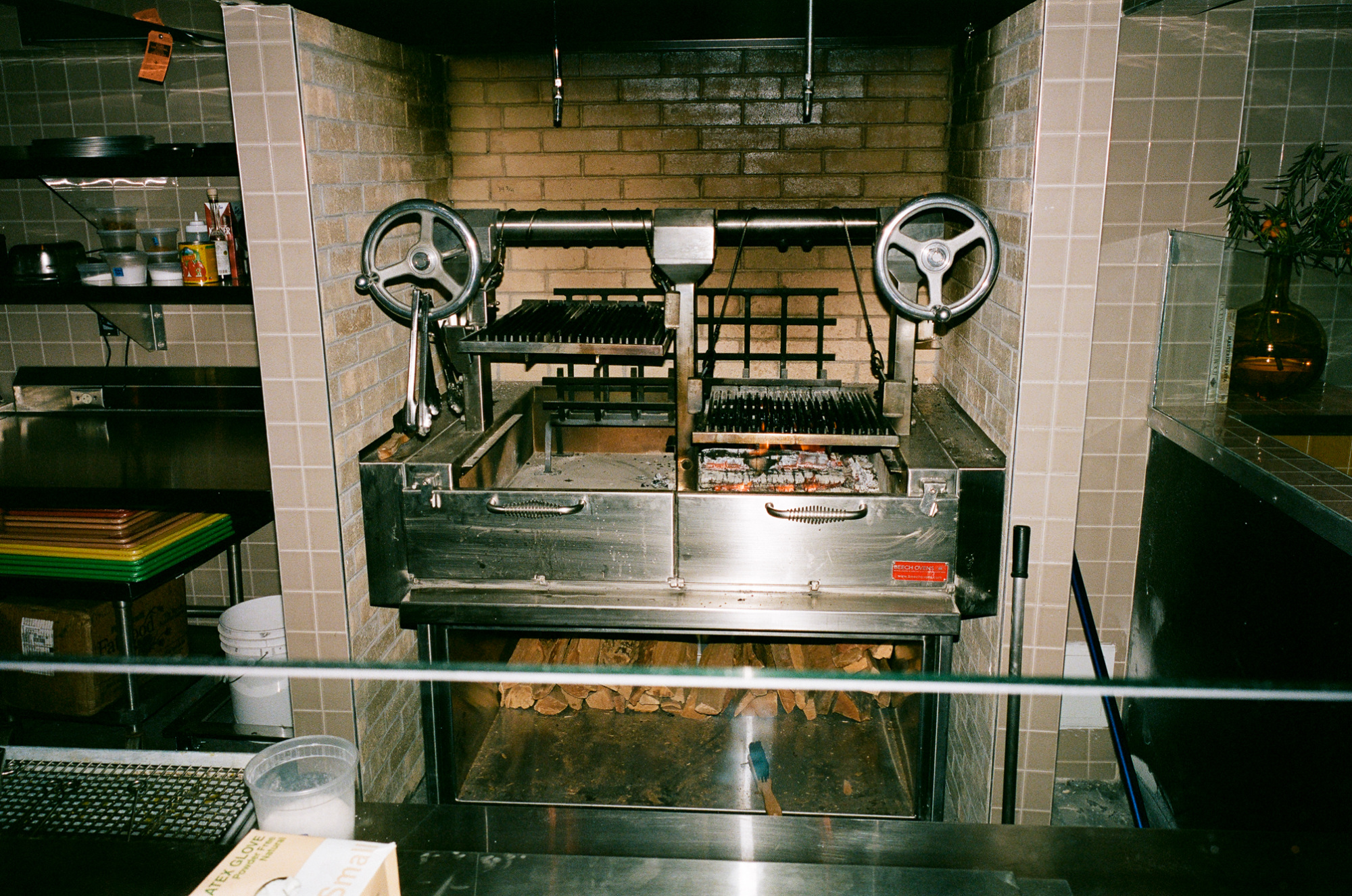
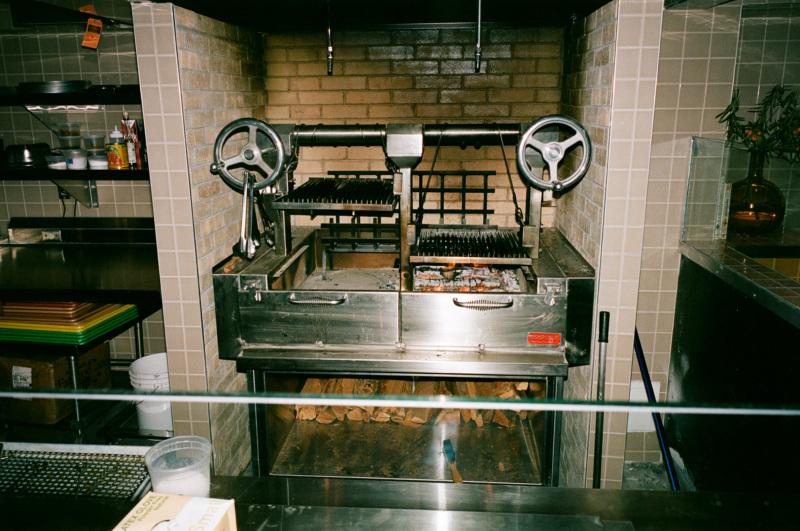
I see you have this stunning Fiero Forni pizza oven, but then there’s the pretty cool open hearth as well. What’s on the menu beyond pizza?
Nothing is set in stone. We have a lot of antipasti, vegetable dishes, and larger format, shareable entrée items. Grilled whole fish, steak, stuff like that. It’s all ingredient-focused. I have a huge love for Italian ingredients, that’s definitely all integrated. And ice cream sundaes.
How are you going to juggle the different demands as head chef of all three?
I will probably be running around like a chicken for a while, which is okay. I have a really great team of people. I think everyone’s pretty aware of the spread and for the most part, we are all mentally prepared for me to be bouncing around a lot. But it’s only a 30-second walk, it doesn’t seem so impossible. I just plan on focusing on each space at each appropriate time.
So, tell me about the food. What’s your culinary inspiration across all three?
Mel’s is going to be the restaurant that you want to eat at on your night off. Or the space that you pop into to have a glass of wine and a pizza or a salad. The menu is Italian-influenced, but not classically so in any way. The pizza is not classic Neapolitan style or anything like that. It’ll be fun and light-hearted and foods that you want to share. As far as the beverage program, it’s fun cocktails that are playful. The wine list will be utilizing the Al Coro list, when necessary, but appropriate for pizza and this style of dining.
You’ve talked about wanting to cook more with live fire. Why is that?
It is a huge turn from what I’ve been doing for the past 18 years. I’ve made plenty of pizzas and have grilled many things in my friend’s backyards, but from a professional standpoint, I’ve never applied that anywhere. It’s a little bit of a learning curve, but I like that kind of challenge. And it’s something fun to learn. When you’re a chef, you’re always learning. That doesn’t ever stop.
Also, I love pizza. If you don’t like pizza, I feel like there’s something wrong. I mean that in the nicest way. If you have a dairy or gluten allergy, and it’s not your thing, I get it. But pizza is fun, it’s something that you have as a kid at a birthday party, or it’s the thing that your family does on Friday night. It’s a fan favorite and it’s one of my favorite things. Taking a stab at making a pizza that I love and feel really good about, it’s fun.
It might be fun, but working with temperamental techniques like fermentation can’t be easy. Have you been deep in sourdough R&D?
It’s been interesting. I’ve been working with my pastry chef, Georgia [Wodder], who will be in charge of the dough program for the pizzeria as well as the pastries next door. She was my pastry chef at Del Posto. She was very good at bread, so it’s something we’ve been talking about for a while. We’ve been working on our dough recipe, what we want from it, how we want it to behave, for the past few months. I was really lucky, a friend of mind let me use his pizza oven on days that his restaurant was closed. We were able to get some time to figure out what we wanted from our dough before we got here. Because if we were doing that right now, it would be disastrous.
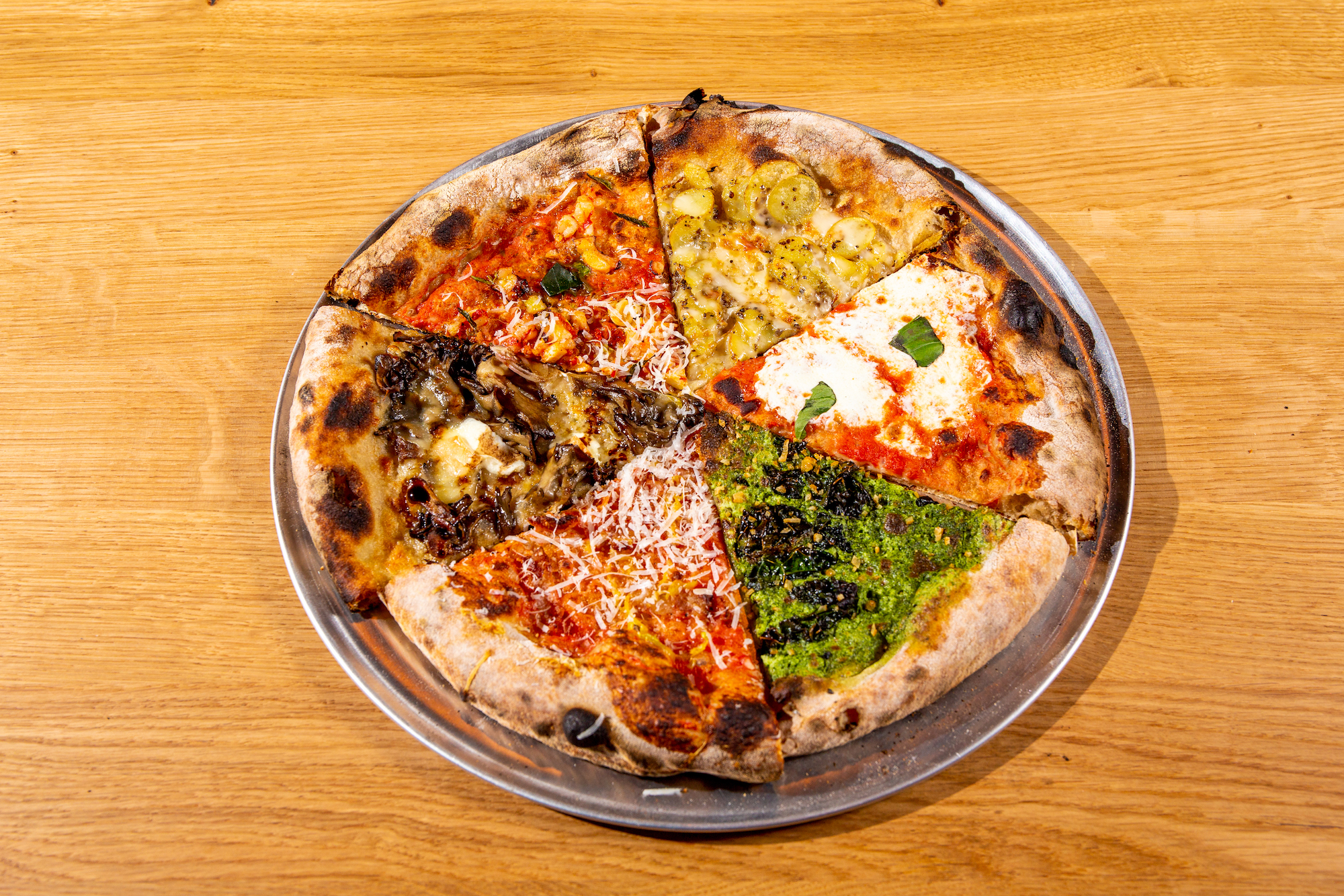

I know you’re still working this out, but what is the vision for Al Coro and Discolo next door?
Next door is a little different. It’ll be a tasting menu. It’ll be Italian-inspired. We want it to feel a little more like a celebration, like a dinner party. Some courses will be precious, some will be shareable, others will be voluptuous or dainty. It’s not going to be a very stark plate followed by a stark plate, followed by the same thing over and over again.
The atmosphere will be fun in a different way. It’s a big space. We plan to have a band. I’m a big lover of music. Previously we had a piano, which we loved. It always made the room feel extra special. I’m sure there is going to be a formality to service that is unavoidable, but the goal is to make it feel different.
Downstairs is more about cocktails than it is about food. The tables are not really conducive to place settings, they are for cocktails and snacks. The food [at Discolo] is meant to be playful and easy. We’re hoping people will spend their night here. The goal is that you’ll take advantage of more than one space while you’re here.
Now that you’re building a fine-dining restaurant from the ground up, with free rein over the shape of the menu, where are you getting your inspiration?
The goal is for it to be Italian fine dining, which is just a space that I’ve lived in for quite a long time at this point. I’ve always looked to regional Italian cooking and how can I apply it to a restaurant in New York City, with ingredients that are from Italy and some that are not. I look to Italy, to what New York has to offer; the greenmarket and seasonality. I’ve always found it to be really challenging, and I appreciate that.
What, in your view, is challenging about Italian fine dining?
Fine dining and Italian sometimes don’t go hand in hand. I think there is a fine line in which that works and balancing is part of [the challenge].
▪️
When I think about what
I want these places to be,
regardless of what’s happening
in the world, I want them
to be somewhere that you
want to go back to.
Somewhere that you feel
good where you are.
▪️
The philosophy of taking the best ingredients from Italy and New York sounds a lot like Del Posto. How do you make that your own at Al Coro?
It starts with changing the menu structure. We will be changing the menu much more often. If you ask Jeff, he’ll tell you that it’s going to change every month. If you ask me, I’d say we’ll see. The goal is to change the menu more often and keep it a little more invigorated than it had previously been.
Switching gears for a moment, the last two years have been brutal for the restaurant industry. What have you learned from the pandemic that you’re applying to these restaurants?
It’s been almost two years since I’ve worked in a restaurant, which is very weird. It may be the longest in 20 years. When I look at what has been happening in the restaurant industry in the past two years, it has created a focus on a more empathetic workspace with more structure and more flexibility. But that was a big focus for us to begin with. Schedules have always been something I’ve been very careful with. Everyone had a regular schedule; everyone had the same days off every week. I did all of that myself, because I thought it was important.
I was definitely one of those people who buried myself in work, but as I’ve gotten older, I feel like it’s just not necessary. Just because I like to do that, and I want to do that for myself, that doesn’t mean it’s appropriate or comfortable for anyone else.
So, it sounds like these are things you were already doing as the executive chef at Del Posto after you took over from Mark Ladner in 2017?
Yeah. I’ve always had a focus on life-work balance in the restaurant. And I love keeping the kitchen very collaborative, which is also not anything new. I’m not a dictator, I don’t like that. I am also not great at everything. I think it’s important to include your team so they can recognize their strengths and their weaknesses. Even within the dining room team, it’s the same. We all have an understanding of what we’re working toward and supporting each other has always been a big focus.
How do you feel about the end of Del Posto?
It was a very difficult time. Obviously, the world was a crazy place. When the restaurant closed, there were a lot of mixed feelings. No one knew what was really happening. We were told that we were going to close for two weeks and hopefully everything would be under control, then we would go back to having a functioning restaurant. But that was just not the case.
I don’t know anyone who was working in the restaurant industry that didn’t feel defeated, and like a failure to a certain degree. I had never been fired from anywhere, ever. So that was a lot. I had a lot of concerns about where my staff was going to be and what was going to happen. A lot of them lived paycheck to paycheck. And I wasn’t necessarily prepared to not have an income, either. I did my best to try and find work for everyone that I could. I did a GoFundMe to at least try and supplement. It was very difficult. It really made you reassess your priorities.
Saying goodbye that way must have been hard.
It was a big part of my life. I was there for nine years. It was a very weird week for me personally. I was supposed to be on vacation. And it was after the holiday season and I was pretty exhausted and ready for a break. But not a break like that.
Have you been you able to bring back any members of your staff?
Actually, it’s crazy, a lot of people on my kitchen team moved out of the city. I would say 50%. Quite a few folks went for higher education. One of my cooks is in nursing school. It’s all really bittersweet, because it is good to see people getting comfortable with where they want to be in life or what they want to do.
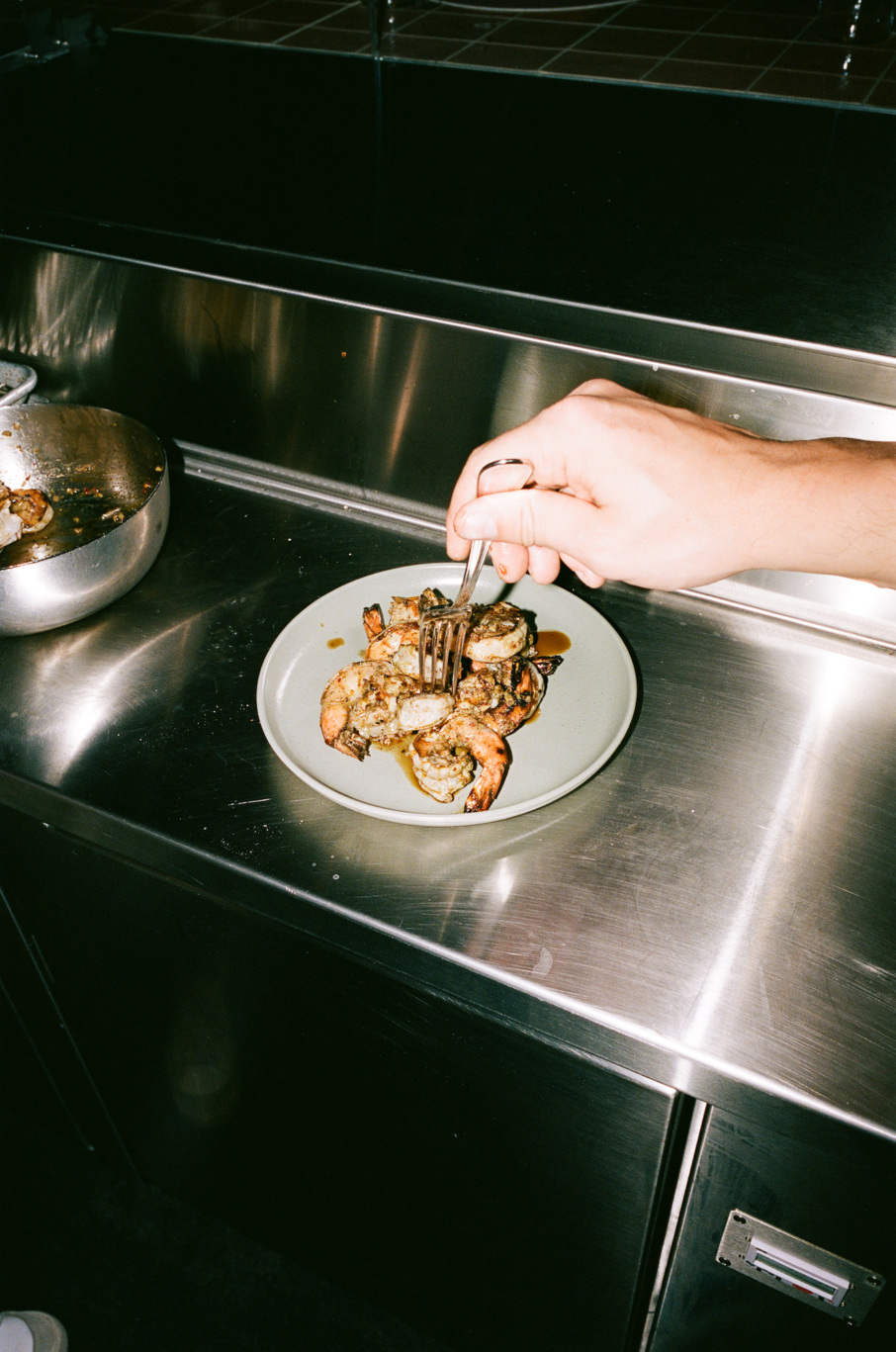
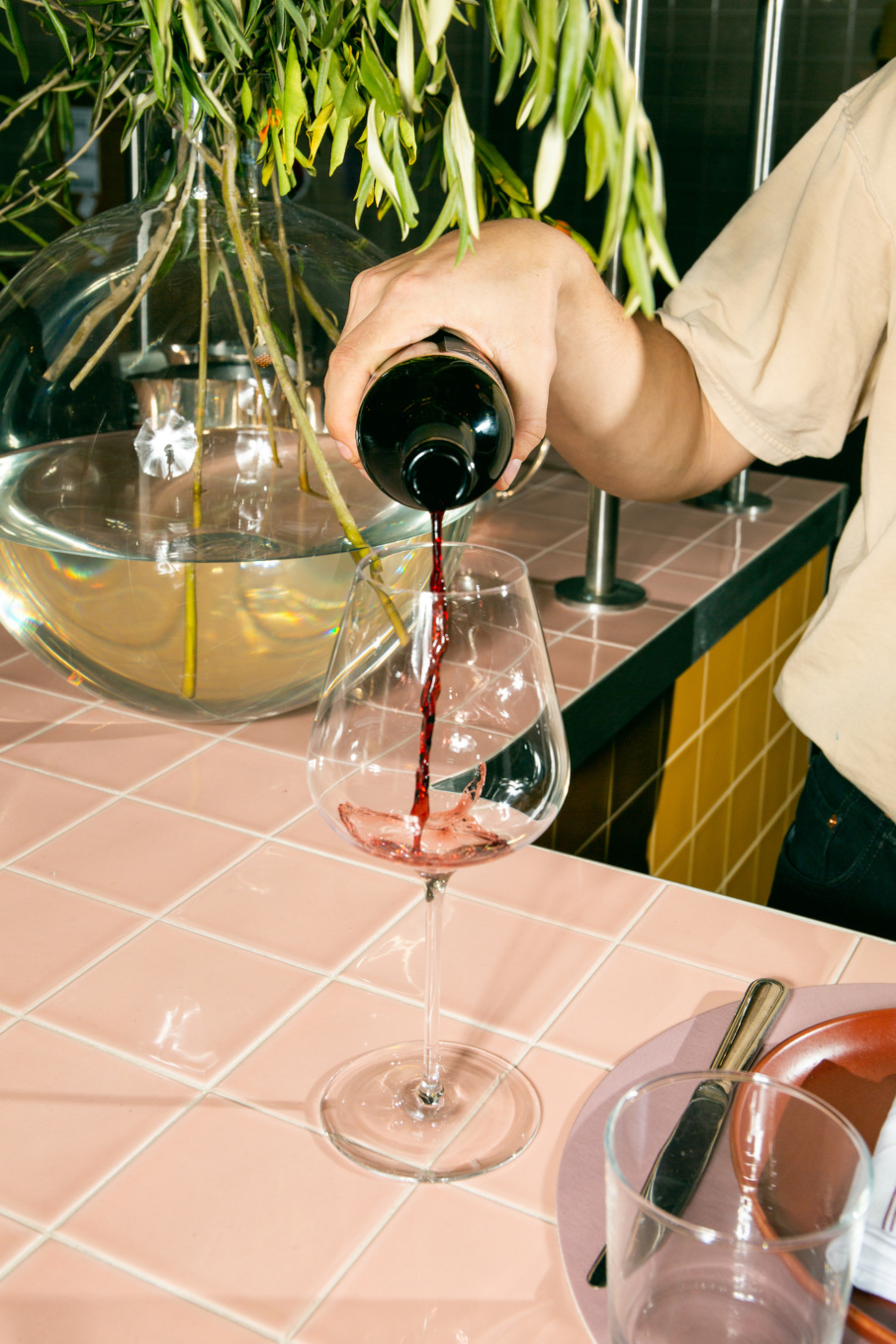
Taking a step back a bit, for some, the legitimacy of fine dining has been called into question because of its unrealistic standards and poor working conditions. As someone who came up in that environment, do you think the old culture of the fine-dining restaurant needs to change?
If it didn’t change pre-COVID, it certainly should have changed post-COVID.
What exactly should have changed?
Just having a bigger focus on everyone’s life-work balance. Working 16 hours a day, six days a week just isn’t … I don’t want to do that. Obviously, I’m opening a restaurant and it belongs to me, so it’s a little different in how I will engage my time.
But previous to COVID, there was a big focus here of everyone taking a step back and finding a way to continue to work at something really great. And work hard at it, but not in an overwhelming or crazy environment. No one’s yelling. That’s never been a thing for me. If I get upset or yell, it’s pretty embarrassing. If you have 40 people watch you lose yourself, it’s not comfortable for anyone.
But don’t you think that fine dining is just always going to produce this very stressful, high-pressure environment that’s going to inevitably result in bad behavior?
I think your environment is what you want it to be. Just because something is demanding doesn’t mean you have to have a nervous breakdown. Yes, some services are more hectic than others, but how you manage stress and that environment, that comes from leadership. If you’re running around like a crazy person, you can’t expect the people around you to not mimic that behavior. That environment, I feel, is a choice.
As a young cook and sous chef, I always lived in very high-stress working conditions and I functioned very well. I was very calm. But that’s not everyone. You watch a lot of people make mistakes; you learn a lot by watching someone behave in a way that maybe you don’t want for yourself.
We communicate like adults. It’s not a pirate ship. We try and create respectful and good working relationships. It’s funny because we spend — and I say this all the time — I spend more time with the people I work with than they do anyone else. And if I can’t have a good working relationship in a place where I spend all of my time, what am I doing?
I am very hard-working, I’m very dedicated. But that doesn’t make me a horrible person to be around. I try to set a good example. If I’m not freaking out and running around like a maniac, then why are you? There’s no reason for that. The demand for what is needed is high, but I don’t demand anything of anyone that I wouldn’t demand of myself. There’s a lot of holding people accountable and holding yourself accountable. And that’s all a choice.


Do you really think the high standards set in fine dining can still be met without the extreme pressure?
I’m not a believer that there’s only one way. There’s a million ways to skin a cat. It just doesn’t make sense to me that this is the only way just because this happened to be the way that I went. I wouldn’t change my trajectory in any way. Or my experiences. But that was my path and I don’t think that my path has to be everyone’s path.
The city has been through hell. The hospitality industry is not in the clear yet. What do you want your restaurants to say about dining in New York City right now? What kind of energy are you hoping to inject into the city?
When I think about what I want these places to be, regardless of what’s happening in the world, I want them to be somewhere that you want to go back to. Somewhere that you feel good where you are. That you feel welcome, you feel taken care of. So, I think, inserting into the universe that we’re here, we’d love for you to come and have a good time. And to keep you safe. That’s what cooking is, you get to share this thing that is very universal. Everyone eats. And it can be fun, it can be romantic, and be playful.
When are you opening Al Coro?
To be honest, we may be ready to open before we’ll be fully staffed. It’ll be a little tricky, but hopefully early spring.
That’s the plan?
If ever there was a plan that a restaurant actually stuck to, then yeah, that’s the plan.
Mahira Rivers is a restaurant critic and writer based in New York, and Resy’s New York columnist. In addition to spending five years as an anonymous inspector for The Michelin Guides, her writing has been published in The New York Times, New York Magazine, Food & Wine, GQ and elsewhere. Follow her on Twitter and Instagram. Follow Resy, too.
Discover More

Stephen Satterfield's Corner Table









